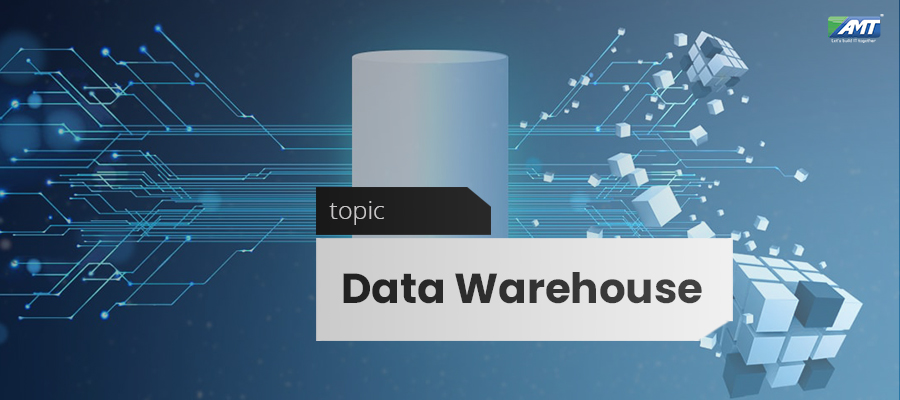In computing, a data warehouse (DW or DWH), also known as an enterprise data warehouse (EDW), is a system used for reporting and data analysis, and is considered a core component of business intelligence. DWs are central repositories of integrated data from one or more disparate sources. They store current and historical data in one single place that are used for creating analytical reports for workers throughout the enterprise.
The data stored in the warehouse is uploaded from the operational systems (such as marketing or sales). The data may pass through an operational data store and may require data cleansing for additional operations to ensure data quality before it is used in the DW for reporting.
Extract, transform, load (ETL) and Extract, load, transform (E-LT) are the two main approaches used to build a data warehouse system.
ETL based Data warehousing:
The typical extract, transform, load (ETL)-based data warehouse uses staging, data integration, and access layers to house its key functions. The staging layer or staging database stores raw data extracted from each of the disparate source data systems. The integration layer integrates the disparate data sets by transforming the data from the staging layer often storing this transformed data in an operational data store (ODS) database. The integrated data are then moved to yet another database, often called the data warehouse database, where the data is arranged into hierarchical groups, often called dimensions, and into facts and aggregate facts. The combination of facts and dimensions is sometimes called a star schema. The access layer helps users retrieve data.
The main source of the data is cleansed, transformed, catalogued, and made available for use by managers and other business professionals for data mining, online analytical processing, market research and decision support. However, the means to retrieve and analyze data, to extract, transform, and load data, and to manage the data dictionary are also considered essential components of a data warehousing system. Many references to data warehousing use this broader context. Thus, an expanded definition for data warehousing includes business intelligence tools, tools to extract, transform, and load data into the repository, and tools to manage and retrieve metadata.
IBM InfoSphere DataStage, Ab Initio Software, Informatica – PowerCenter are some of the tools which are widely used to implement ETL based data warehouse.
ELT based Data warehousing:
ELT based data warehousing gets rid of a separate ETL tool for data transformation. Instead, it maintains a staging area inside the data warehouse itself. In this approach, data gets extracted from heterogeneous source systems and are then directly loaded into the data warehouse, before any transformation occurs. All necessary transformations are then handled inside the data warehouse itself. Finally, the manipulated data gets loaded into target tables in the same data warehouse.
Benefits:
A data warehouse maintains a copy of information from the source transaction systems. This architectural complexity provides the opportunity to:
- Integrate data from multiple sources into a single database and data model. More congregation of data to single database so a single query engine can be used to present data in an ODS.
- Mitigate the problem of database isolation level lock contention in transaction processing systems caused by attempts to run large, long-running, analysis queries in transaction processing databases.
- Maintain data history, even if the source transaction systems do not.
- Integrate data from multiple source systems, enabling a central view across the enterprise. This benefit is always valuable, but particularly so when the organization has grown by merger.
- Improve data quality, by providing consistent codes and descriptions, flagging or even fixing bad data.
- Present the organization’s information consistently.
- Provide a single common data model for all data of interest regardless of the data’s source.
- Restructure the data so that it makes sense to the business users.
- Restructure the data so that it delivers excellent query performance, even for complex analytic queries, without impacting the operational systems.
- Add value to operational business applications, notably customer relationship management (CRM) systems.
- Make decision–support queries easier to write.
- Organize and disambiguate repetitive data
The environment for data warehouses and marts includes the following:
- Source systems that provide data to the warehouse or mart;
- Data integration technology and processes that are needed to prepare the data for use;
- Different architectures for storing data in an organization’s data warehouse or data marts;
- Different tools and applications for the variety of users;
- Metadata, data quality, and governance processes must be in place to ensure that the warehouse or mart meets its purposes.
Today, the most successful companies are those that can respond quickly and flexibly to market changes and opportunities. A key to this response is the effective and efficient use of data and information by analysts and managers. A “data warehouse” is a repository of historical data that is organized by subject to support decision makers in the organization. Once data is stored in a data mart or warehouse, it can be accessed.
The above is a brief about Data warehouse. Watch this space for more updates on the latest trends in Technology.
